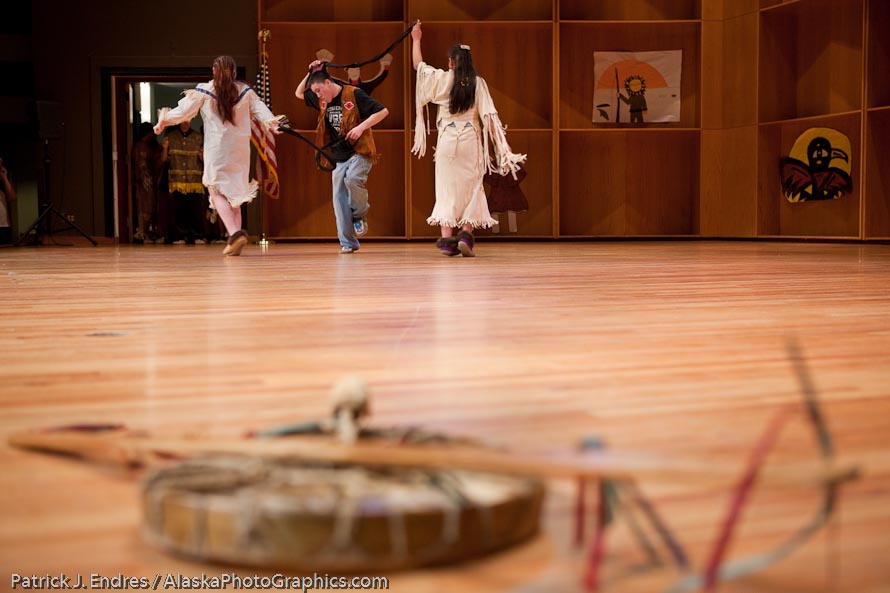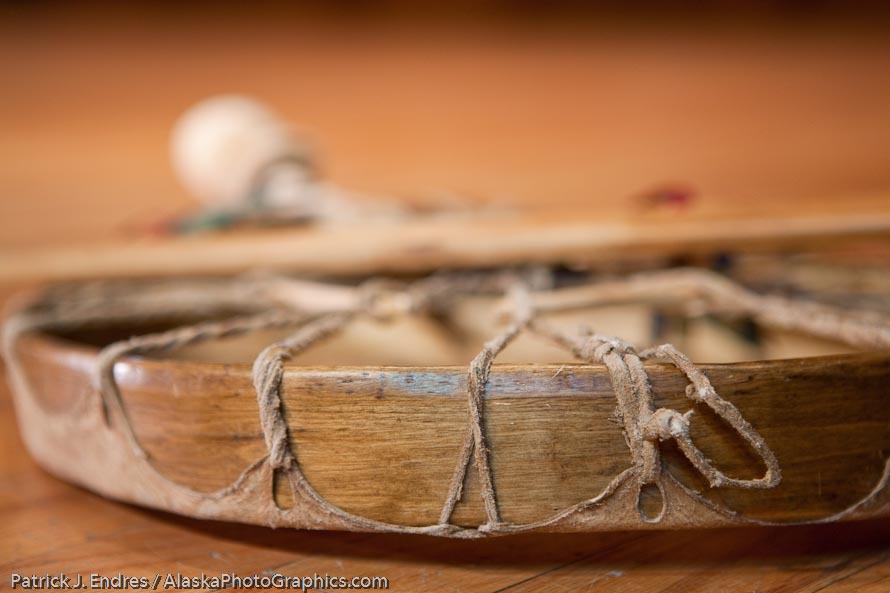F/8 and be there is a common phrase among the photography community, implying that half of the job is being somewhere at the right time. And it is true in many respects, but there is often a lot more that goes into a capturing a creative image. I’ve admired photographers that successfully employ some degree of viewer directive within the image. To control where the eye travels first in a picture can be done with composition, with light, and very effectively with focus, and in particular with a narrow depth of field.
I have a number of photos in the upcoming April issue of Alaska Magazine, but one in particular got my attention, and it involved a shallow depth of field to make it work right. The frame was taken at the Festival of Native Arts in Fairbanks, an annual event that I’ve photographed for many years. Native Alaska dance groups perform on stage, and I’m usually trying to isolate and simplify a scene, which involves the equally hard task of trying to include a moving subject in the frame while at the same time excluding other unwanted objects in the background.
In this particular scene, the dancers moved to the other side of the stage and set a drum down near me. I initially used it as a foreground element, but was not much satisfied with the composition, especially the background.

Circle Dancers perform native dance at the 2009 Festival of Native Arts, Fairbanks, Alaska. The festival is one of interior Alaska's greatest celebrations of Alaska Native culture.
Then the thought struck me to just photograph the drum by itself. It exemplifies an often overlooked (tight) shot in the genre of editorial photography coverage. I used f/2.8 to minimize the amount of focus depth, which draws your eye immediately to the end of the drum. As it turns out, it was one of my favorite images from the shoot, and one I did not imagine or preconceive ahead of time. In retrospect, it serves as a good reminder to consider the value of that narrow focal plane to add visual control in a picture. The drum below makes for a strong but simple image and Alaska Magazine ran it as a two page spread.

Athabascan drum, Festival of Native arts, Fairbanks, Alaska. Canon 1Ds Mark III, 24-70 f/2.8L, 1/200 sec @ f/2.8, (56mm), ISO 800






